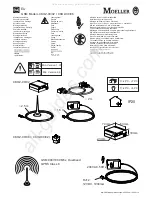
Healt
h and
saf
ety i
nform
ation
The exposure limit set by the FCC for wireless mobile devices employs
a unit of measurement known as the Specific Absorption Rate (SAR).
The SAR is a measure of the rate of absorption of RF energy by the
human body expressed in units of watts per kilogram (W/kg). The FCC
requires devices to comply with a safety limit of 1.6 watts per kilogram
(1.6 W/kg). The FCC exposure limit incorporates a substantial margin
of safety to give additional protection to the public and to account for
any variations in measurements.
SAR tests are conducted using standard operating positions accepted
by the FCC with the device transmitting at its highest certified power
level in all tested frequency bands. Although the SAR is determined at
the highest certified power level, the actual SAR level of the device
while operating can be well below the maximum value. This is because
the device is designed to operate at multiple power levels so as to use
only the power required to reach the network. In general, the closer
you are to a wireless base station antenna, the lower the power output.
Before a new model device is available for sale to the public, it must be
tested and certified to the FCC that it does not exceed the exposure
limit established by the FCC. Tests for each model device are
performed in positions and locations (e.g. at the ear and worn on the
body) as required by the FCC.
The highest SAR values for this model modem as reported to the FCC
are:
GSM850 Body: 1.30 W/Kg.
GSM1900 Body:
1.23
W/Kg
.
This USB dongle has been demonstrated compliance with FCC RF exposure
limited in laptop computer configurations with a minimum separation
distance of 0.5 cm between the EUT and the body when the extender
cable is used and can be used in laptop computers with sub-stantially similar
physical dimensions, construction, and electrical and RF characteristics.
















































